Can Your Home Run on Green Energy?
In today's world, the concept of green energy is not just a trend; it's becoming a necessity. With climate change knocking on our doors and fossil fuels depleting at an alarming rate, many homeowners are asking themselves, "Can my home run on green energy?" The answer is a resounding yes! But how feasible is it for the average person? In this article, we will explore the various renewable energy sources available, their benefits, and practical steps you can take to transition your home into a more sustainable haven.
Imagine waking up every morning knowing that your home is powered by the sun, wind, or water, contributing positively to the environment while saving money on energy bills. Sounds like a dream, right? Well, it’s becoming a reality for many. Transitioning to green energy not only reduces your carbon footprint but can also lead to significant long-term savings. But before we dive into how you can achieve this, let’s first understand what green energy really means.
Green energy refers to energy that is generated from renewable sources that have a minimal impact on the environment. Unlike conventional energy sources like coal and natural gas, which release harmful emissions, green energy harnesses the power of nature. This includes solar, wind, hydroelectric, and geothermal energy. The importance of transitioning from fossil fuels to sustainable energy solutions cannot be overstated. Not only does it help combat climate change, but it also promotes energy independence and security.
There are several types of renewable energy sources that can be utilized in residential settings. Each has its unique advantages and applications:
- Solar Energy: Harnessing sunlight through solar panels.
- Wind Energy: Utilizing wind turbines to generate electricity.
- Hydroelectric Energy: Generating power from flowing water.
- Geothermal Energy: Using the Earth's internal heat for energy.
By understanding these sources, you can make informed decisions on which one suits your home and lifestyle best. Now, let’s take a deeper look at solar energy, which is one of the most accessible options for homeowners.
Solar energy is rapidly becoming the go-to choice for many homeowners. Installing solar panels on your roof can significantly reduce your reliance on the grid and lower your electricity bills. The initial investment might seem daunting, but when you consider the long-term savings and potential tax incentives, it becomes a more appealing option. The average cost of solar panel installation can range from $15,000 to $25,000, depending on the size of your system. However, many homeowners report savings of 50% or more on their energy bills, making it a worthwhile investment.
Solar panels offer numerous benefits that extend far beyond just cost savings. Here are some key advantages:
- Reduced Electricity Bills: Generate your own power and watch your utility costs drop.
- Increased Property Value: Homes with solar energy systems often sell at a premium.
- Environmental Impact: Reduce your carbon footprint and contribute to a healthier planet.
While the benefits are compelling, it's essential to address some challenges associated with solar energy. The initial costs can be a barrier for many, and the effectiveness of solar panels is dependent on sunlight availability. However, advancements in technology are making solar panels more efficient, and financing options are available to help mitigate upfront costs. Additionally, integrating battery storage systems can allow you to harness excess energy for use during cloudy days or at night.
Wind energy is another renewable source that can be harnessed for residential use. Small wind turbines can be installed on your property to generate electricity. While not as common as solar panels, they can complement other renewable energy sources, providing a more consistent energy supply, especially in windy areas. The installation of a small wind turbine can cost between $10,000 and $70,000, depending on the size and installation complexity.
Improving energy efficiency is crucial for maximizing the benefits of green energy. By reducing your overall energy consumption, you can lower your bills and lessen your environmental impact. Simple changes, such as switching to energy-efficient appliances and using smart home technologies, can make a significant difference.
Smart home technologies can significantly enhance energy efficiency by allowing you to monitor and control your energy usage. Devices such as smart thermostats, energy monitors, and automated lighting systems can help you optimize energy consumption, ensuring that you use power only when necessary.
Proper insulation plays a vital role in energy conservation. By improving your home's insulation, you can decrease your reliance on heating and cooling systems, which account for a significant portion of energy consumption. Consider upgrading your insulation, sealing drafts, and using energy-efficient windows to create a more comfortable and energy-efficient living space.
1. Can I power my entire home with renewable energy?
Yes, with the right combination of solar panels, wind turbines, and energy storage solutions, it is possible to power your entire home with renewable energy.
2. What is the best renewable energy source for my home?
The best source depends on your location, budget, and energy needs. Solar energy is widely accessible, while wind energy may be more effective in windy regions.
3. How much can I save by switching to green energy?
Savings vary based on energy usage and local utility rates, but many homeowners report savings of 50% or more on their energy bills after switching to renewable energy.
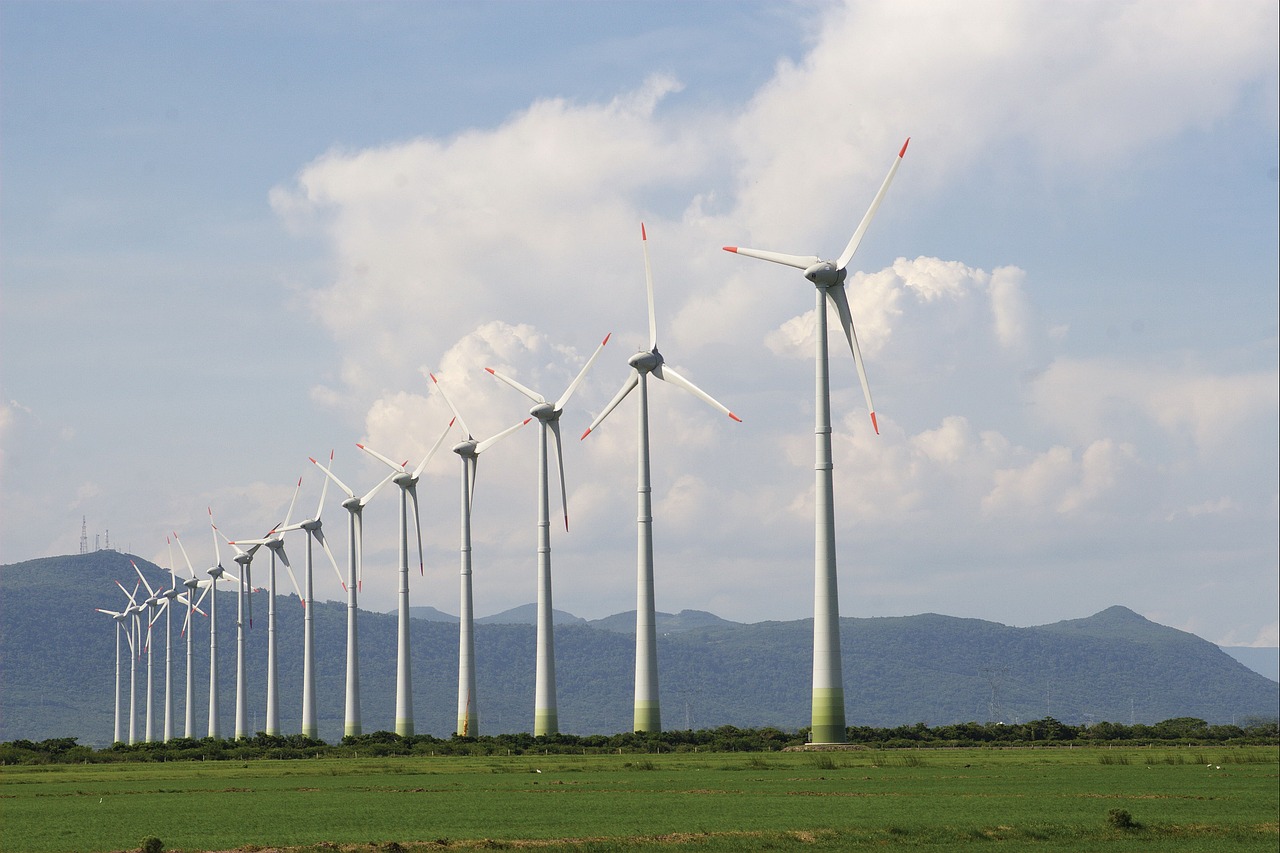
Understanding Green Energy
Green energy is a term that has gained traction in recent years as more people become aware of the environmental impact of traditional energy sources. At its core, green energy refers to energy derived from renewable resources that are naturally replenished. This includes sources like sunlight, wind, rain, tides, waves, and geothermal heat. Unlike fossil fuels, which release harmful emissions into the atmosphere, green energy offers a cleaner, more sustainable alternative that can help combat climate change.
Transitioning from fossil fuels to green energy is not just a trend; it’s a necessity for a sustainable future. The importance of this shift cannot be overstated. As we face the realities of global warming and environmental degradation, the need for sustainable energy solutions becomes more critical. By harnessing renewable energy sources, we can significantly reduce our carbon footprint and contribute to a healthier planet.
There are several key types of green energy, each with its unique benefits and applications. Some of the most commonly recognized sources include:
- Solar Energy: Captured through solar panels, this energy source utilizes sunlight to generate electricity.
- Wind Energy: Generated by wind turbines, it harnesses the power of wind to produce electricity.
- Hydroelectric Energy: Produced by capturing the energy of flowing water, typically in rivers or dams.
- Geothermal Energy: Derived from the heat stored beneath the Earth’s surface, it can be used for heating and electricity generation.
Understanding these sources is essential for anyone considering a shift toward green energy. Each type offers unique advantages that can be tailored to individual needs and circumstances. For instance, while solar panels are ideal for sunny locations, wind turbines may be more suitable for areas with consistent wind patterns.
Moreover, transitioning to green energy not only benefits the environment but also has economic advantages. As technology advances, the costs associated with renewable energy have been steadily decreasing. Investing in green energy can lead to substantial savings on energy bills over time. Additionally, many governments offer incentives and rebates for homeowners who opt for renewable energy solutions, making the transition even more appealing.
In conclusion, understanding green energy is the first step toward a more sustainable lifestyle. By recognizing the various types of renewable energy and their benefits, individuals can make informed decisions that contribute to both their financial well-being and the health of our planet. So, are you ready to explore how your home can run on green energy?
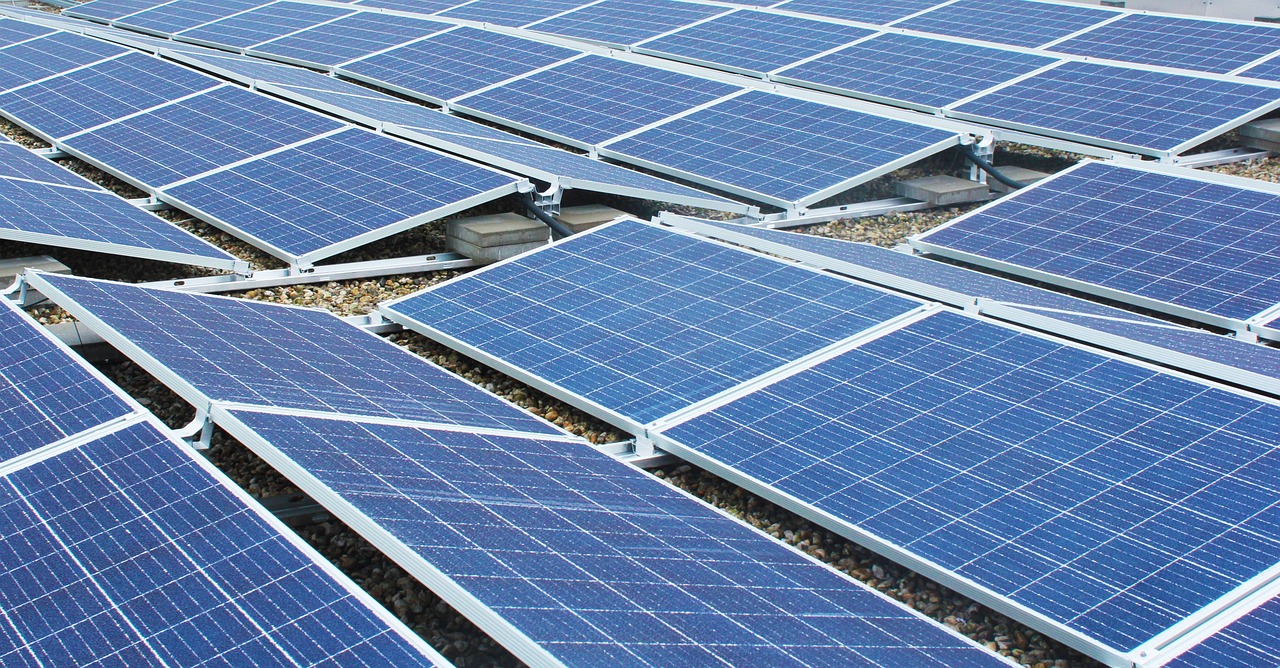
Types of Renewable Energy Sources
When it comes to renewable energy sources, there are a variety of options available that can help homeowners transition to a more sustainable lifestyle. Each type of renewable energy harnesses natural processes to generate power, making them not only environmentally friendly but also increasingly accessible. Understanding these sources is crucial in determining which is best suited for your home. Let’s dive into the most popular types of renewable energy sources, namely solar, wind, hydroelectric, and geothermal energy.
Solar energy is perhaps the most recognized and widely adopted form of renewable energy for residential use. By installing solar panels on rooftops, homeowners can convert sunlight into electricity, significantly reducing their reliance on traditional power grids. The beauty of solar energy lies in its abundance; after all, the sun provides more energy in one hour than the entire world consumes in a year! This makes solar panels a fantastic investment for those looking to harness a clean and virtually limitless power source.
Next up is wind energy. While you may associate wind energy with large wind farms, small wind turbines can also be installed in residential areas. These turbines can generate electricity from the wind, complementing other renewable sources like solar power. Imagine your home being powered by the very breeze that rustles the leaves in your backyard! However, it's essential to note that wind energy's effectiveness depends on your location; areas with consistent wind patterns are ideal for maximizing energy production.
Another fascinating source of renewable energy is hydroelectric power. This method utilizes the flow of water to generate electricity, typically through dams or small-scale water turbines. While it might not be feasible for every home to harness hydroelectric power directly, homeowners near rivers or streams can explore options like micro-hydro systems. These systems can provide a consistent and reliable energy source, especially in areas where water flow is abundant.
Lastly, we have geothermal energy, a lesser-known but equally impressive renewable energy source. By tapping into the Earth’s internal heat, homeowners can utilize geothermal systems for heating and cooling their homes. This method is particularly effective in regions with significant geothermal activity, such as areas near hot springs or volcanic regions. The initial installation costs can be high, but the long-term savings on energy bills can be substantial.
To summarize, here’s a quick overview of the four types of renewable energy sources discussed:
| Type of Renewable Energy | Key Features | Ideal For |
|---|---|---|
| Solar Energy | Converts sunlight into electricity using solar panels. | Homes with ample sunlight exposure. |
| Wind Energy | Generates electricity via small wind turbines. | Areas with consistent wind patterns. |
| Hydroelectric Power | Utilizes flowing water to generate electricity. | Homes near rivers or streams. |
| Geothermal Energy | Uses Earth's internal heat for heating and cooling. | Regions with geothermal activity. |
In conclusion, the journey toward a greener home begins with understanding the various types of renewable energy sources available. Each option has its unique benefits and challenges, and the best choice often depends on individual circumstances and geographical location. By exploring these renewable energy sources, you can take significant steps toward a more sustainable and energy-efficient lifestyle.

Solar Energy for Homes
When it comes to harnessing the power of the sun, solar energy stands out as one of the most accessible and effective renewable energy sources for homeowners. Imagine transforming your roof into a mini power plant, generating clean energy right from your own home! This isn't just a dream; it's a reality for many people today. Solar panels are becoming increasingly popular, and for good reason. They not only help reduce your carbon footprint but also offer significant savings on your energy bills over time.
Installing solar panels is a straightforward process, but it does require some initial investment. The cost of solar panel installation can vary based on several factors, including the size of your home, the type of panels you choose, and local installation costs. On average, homeowners can expect to pay between $15,000 to $25,000 for a complete solar panel system. However, many states offer incentives, rebates, and tax credits that can significantly lower this cost, making solar energy more accessible than ever.
Once your solar panels are up and running, you'll start to see reductions in your electricity bills. In fact, many homeowners report saving anywhere from 50% to 100% on their monthly energy costs! This is because solar panels generate energy during the day when the sun is shining, allowing you to power your home without relying on the grid. Additionally, some systems allow you to sell excess energy back to the grid, creating a potential income stream.
But, let's not sugarcoat it—there are challenges to consider when choosing solar energy for your home. The most notable challenge is the initial cost, which can be a barrier for some homeowners. Additionally, solar panels depend heavily on sunlight, meaning their efficiency can drop on cloudy days or during winter months. However, advancements in solar technology are continually improving efficiency, and battery storage systems are now available to store excess energy for use during less sunny periods.
To give you a better understanding of the costs and savings associated with solar panels, take a look at the following table:
| Item | Cost/Savings |
|---|---|
| Average Installation Cost | $15,000 - $25,000 |
| Average Monthly Savings | 50% - 100% |
| Potential Income from Selling Excess Energy | Varies by State |
In summary, solar energy is a fantastic option for homeowners looking to embrace green energy. While the initial investment can be daunting, the long-term benefits—both economically and environmentally—make it a worthwhile consideration. With the right planning and research, transitioning to solar energy can not only power your home but also contribute to a more sustainable future.
- How long do solar panels last? Solar panels typically have a lifespan of 25 to 30 years, with warranties often covering this period.
- Will solar panels work on cloudy days? Yes, solar panels can still generate electricity on cloudy days, though their efficiency may be reduced.
- What happens if I generate more energy than I use? In many areas, you can sell excess energy back to the grid, which can help offset your costs.
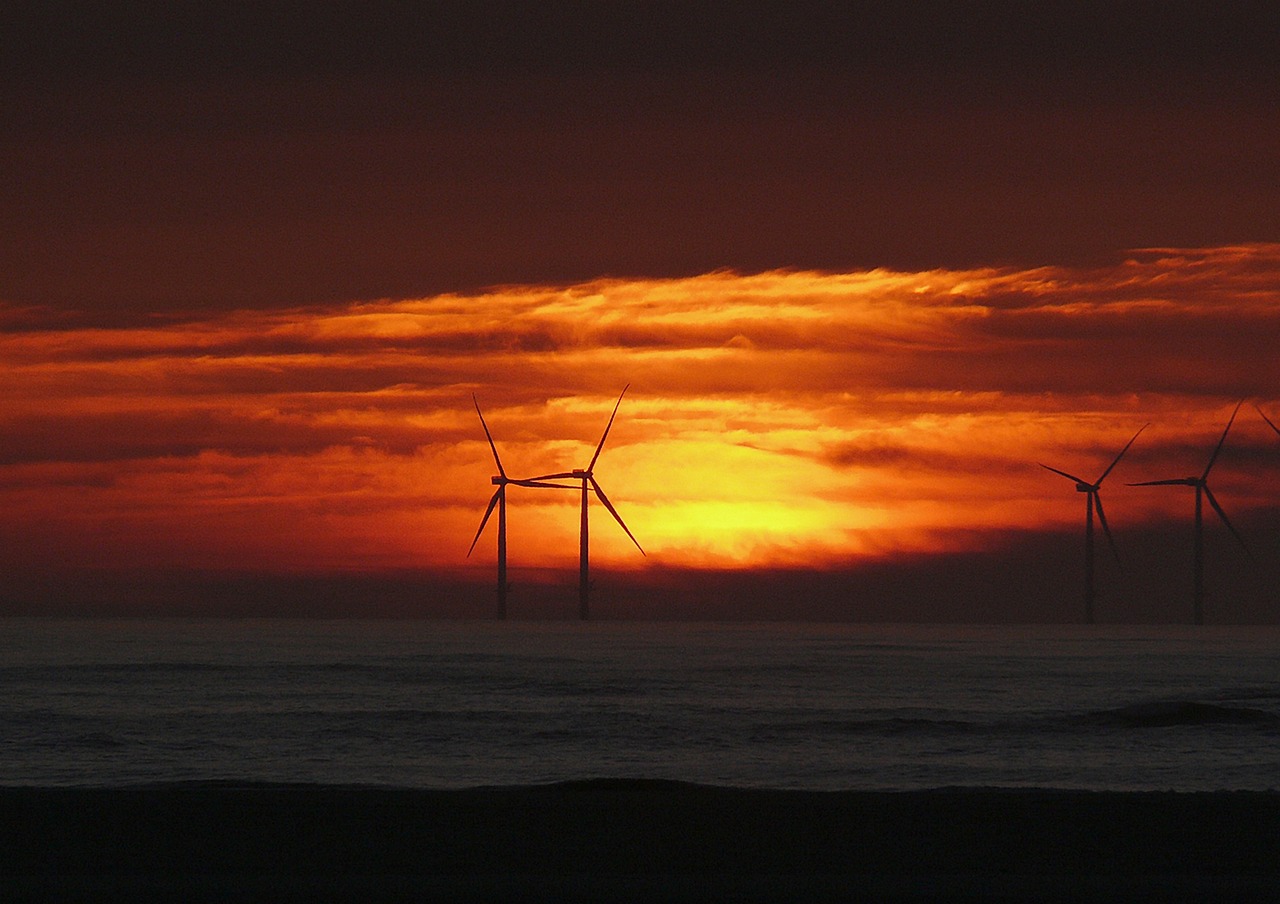
Benefits of Solar Panels
When it comes to investing in your home, solar panels stand out as a shining beacon of opportunity. Imagine slashing your electricity bills while simultaneously contributing to a cleaner planet. Sounds appealing, right? Let's dive into the myriad benefits that solar panels bring to the table. First off, one of the most significant advantages is the potential for substantial savings on your energy bills. By harnessing the sun's energy, you can drastically reduce your reliance on traditional power sources, which often come with fluctuating rates. In fact, many homeowners report savings of up to 50% or more on their monthly electricity costs!
Moreover, installing solar panels can significantly increase your property value. A home equipped with solar energy systems is often seen as more desirable, making it a smart investment if you ever decide to sell. According to a study by the National Renewable Energy Laboratory, homes with solar panels sell for an average of 4.1% more than those without. This means that not only are you saving money now, but you’re also setting yourself up for a profitable future!
Additionally, solar energy systems can provide energy independence. With the increasing instability of fossil fuel markets, having your own energy source means you won't be as affected by rising energy prices or sudden shortages. It's like having your own personal power plant right on your roof! And let’s not forget the environmental impact. By switching to solar energy, you are actively reducing your carbon footprint and contributing to a more sustainable future. Each kilowatt-hour of solar energy you generate can help prevent the release of approximately 0.85 pounds of carbon dioxide into the atmosphere. That’s a big step towards combating climate change!
Furthermore, many governments offer incentives for solar panel installation, including tax credits, rebates, and grants. These financial perks can significantly offset the initial costs, making solar energy more accessible than ever. For instance, in the United States, the Investment Tax Credit (ITC) allows you to deduct a substantial percentage of the installation costs from your federal taxes. This means that the transition to solar energy doesn't have to break the bank!
In summary, the benefits of solar panels are plentiful and compelling. From reducing electricity bills and increasing property value to providing energy independence and minimizing environmental impact, solar energy is a smart choice for homeowners looking to embrace a sustainable lifestyle. So, are you ready to take the plunge into the world of solar energy? The sun is waiting!
- How long do solar panels last? Solar panels typically have a lifespan of 25 to 30 years, with many manufacturers offering warranties that last for 20-25 years.
- Will solar panels work on cloudy days? Yes, solar panels can still generate electricity on cloudy days, although their efficiency may be reduced.
- What happens if I produce more energy than I use? Many utility companies have net metering programs that allow you to sell excess energy back to the grid, often resulting in credits on your electricity bill.
- Are solar panels worth the investment? While the initial costs can be high, the long-term savings on energy bills, increased home value, and available incentives make solar panels a worthwhile investment for many homeowners.
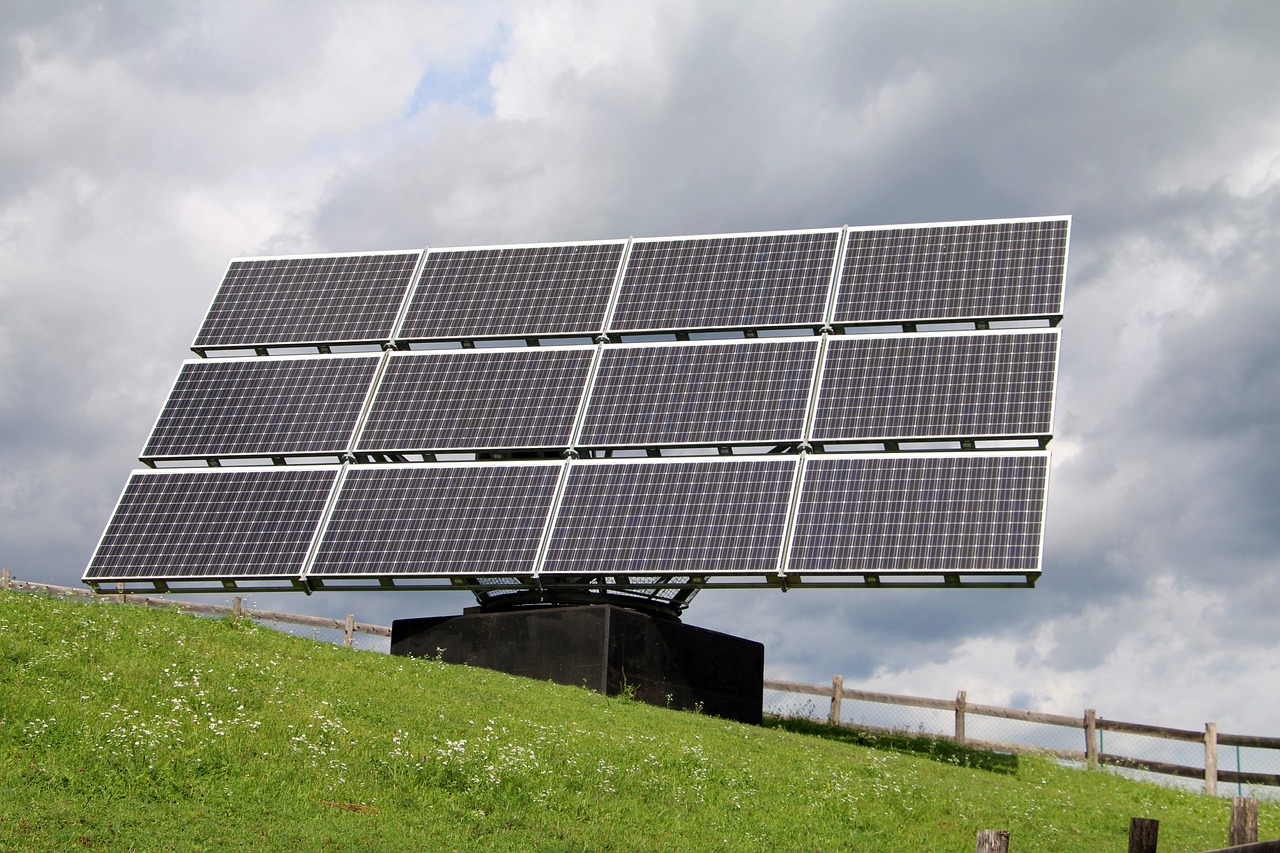
Challenges of Solar Energy
While solar energy shines brightly as a beacon of hope for sustainable living, it does come with its share of challenges. One of the most significant hurdles is the high upfront cost associated with solar panel installation. Although prices have been steadily decreasing over the years, the initial investment can still be daunting for many homeowners. For instance, the average cost to install solar panels can range from $15,000 to $25,000, depending on the size of the system and the location. This substantial expenditure can make it difficult for some families to make the leap to solar energy.
Another challenge is the dependency on sunlight. Solar panels generate electricity only when the sun is shining, which means that during cloudy days or at night, homeowners may still rely on traditional energy sources. This intermittency can lead to concerns about energy reliability. However, many homeowners are now investing in battery storage systems to store excess energy generated during sunny days, providing a buffer during less optimal conditions.
Additionally, the space requirement for solar panels can be a limiting factor. Not every home has the roof space or orientation to accommodate a solar system. For instance, shaded roofs or those with an unfavorable angle might not be suitable for solar panel installation, which can leave some homeowners feeling left out of the green energy revolution.
Moreover, there are maintenance costs to consider. While solar panels are generally low-maintenance, they do require periodic cleaning and inspection to ensure optimal performance. Over time, these maintenance tasks can add up, impacting the overall cost-effectiveness of the solar investment.
Lastly, there can be regulatory hurdles when it comes to installing solar energy systems. Different regions have varying laws, permits, and incentives that can complicate the process. Homeowners may find themselves navigating a maze of regulations that can delay installation and increase frustration.
Despite these challenges, many homeowners find that the long-term benefits of solar energy, such as reduced electricity bills and increased home value, often outweigh the initial obstacles. With proper planning and research, transitioning to solar energy can be a rewarding experience that contributes to a more sustainable future.
- What are the main benefits of solar energy? Solar energy can significantly reduce electricity bills, increase property value, and lower carbon footprints.
- How long do solar panels last? Most solar panels come with a warranty of 25 years, but they can last even longer with proper maintenance.
- Can I install solar panels myself? While some homeowners choose to install solar panels themselves, it is often recommended to hire professionals to ensure safety and compliance with local regulations.
- What happens to solar panels during a power outage? If you have battery storage, you can still use the stored energy; otherwise, solar panels will not work during an outage unless you have a specific backup system in place.
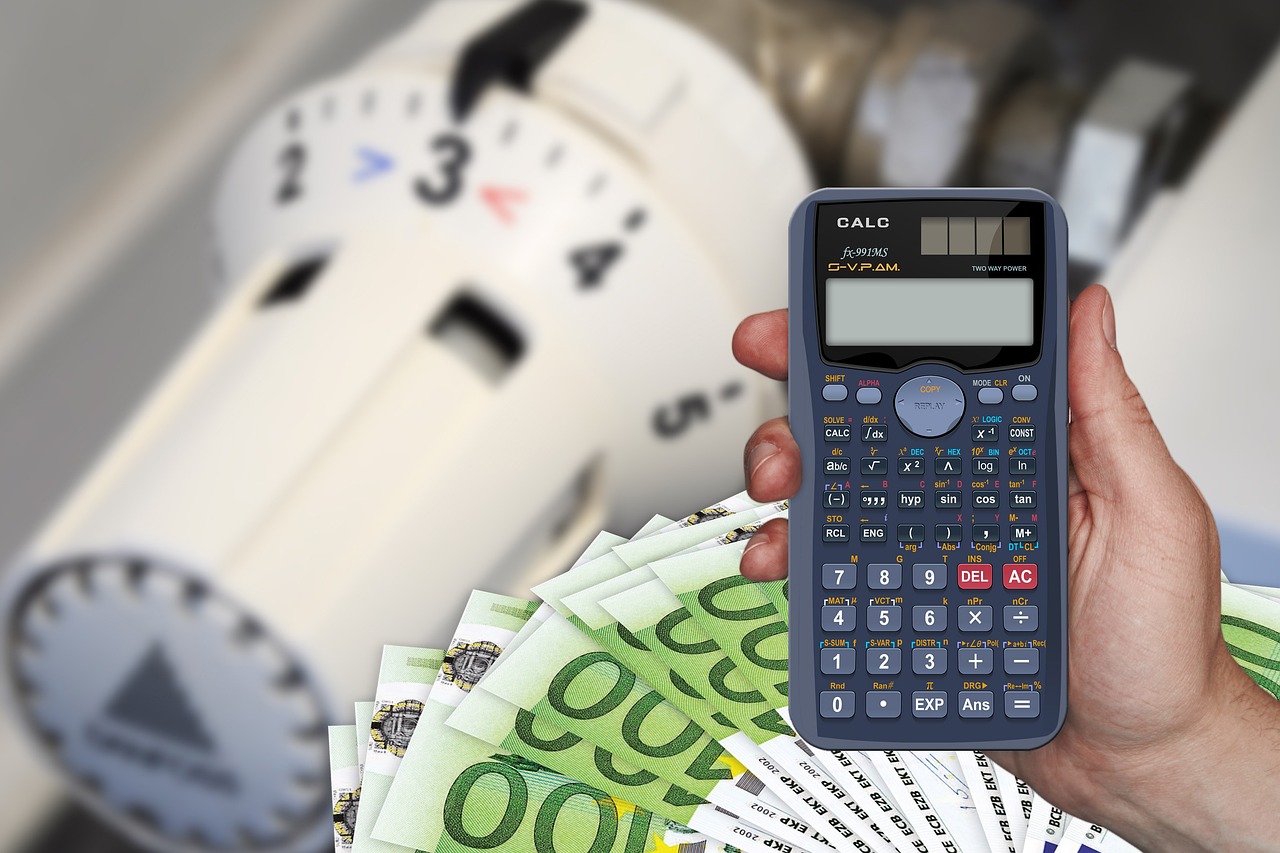
Wind Energy Options
When it comes to harnessing the power of the wind, homeowners have a fantastic opportunity to tap into a renewable energy source that can significantly reduce their reliance on traditional electricity. Wind energy is not just for massive wind farms; it can also be effectively utilized in residential settings. Imagine waking up to the sound of a gentle breeze and knowing that the very wind outside your window is generating clean energy for your home. Sounds great, right? But how does it work? Let's dive into the details.
One of the most popular ways to harness wind energy at home is through the installation of small wind turbines. These turbines are designed specifically for residential use and can be a perfect addition to properties with enough open space and consistent wind flow. Typically, a small wind turbine can produce anywhere from 400 watts to 100 kilowatts of electricity, depending on its size and the wind conditions. So, if you live in an area with a good amount of wind and have the space for it, this could be a game-changer for your energy bills.
However, before you rush out to buy a wind turbine, it’s essential to consider a few factors. First, you need to assess your local wind resources. Not all locations are suitable for wind energy generation. Sites with average wind speeds of at least 10 miles per hour are generally considered ideal. A wind site assessment can help you understand whether your property meets these criteria. Additionally, you should also check local zoning laws and regulations, as some areas have restrictions on turbine installation due to aesthetics or noise concerns.
Once you determine your property is suitable, the installation process is relatively straightforward. Most small wind turbines come with a tower and blades that can be set up in your yard or on your roof. The initial investment can vary widely, typically ranging from $10,000 to $70,000, depending on the size and type of turbine you choose. While this might seem steep, it's important to remember that many states offer tax incentives and rebates for renewable energy installations, which can help offset the costs.
In addition to being a source of clean energy, small wind turbines can complement other renewable energy sources, such as solar panels. By combining these two technologies, you can create a more resilient and reliable energy system for your home. For instance, while solar panels generate electricity during sunny days, wind turbines can continue to produce energy during cloudy or windy conditions, ensuring that your home remains powered even when one source is less effective.
To give you a clearer picture, here’s a quick comparison of the benefits and challenges of installing a small wind turbine:
| Benefits | Challenges |
|---|---|
|
|
In conclusion, wind energy presents a viable option for homeowners looking to embrace renewable energy. By understanding the benefits and challenges of small wind turbines, you can make an informed decision about whether this technology is right for your home. With the right conditions and setup, you could be well on your way to harnessing the wind to power your life sustainably. So, are you ready to take the leap into the world of wind energy?
Q: How much energy can a small wind turbine produce?
A small wind turbine can produce anywhere from 400 watts to 100 kilowatts, depending on its size and wind conditions.
Q: Do I need a permit to install a wind turbine?
Yes, it’s essential to check local zoning laws and regulations, as some areas may have restrictions on installation.
Q: What is the average cost of a small wind turbine?
The cost can range from $10,000 to $70,000, but various tax incentives may help reduce this initial investment.
Q: Can I combine wind energy with solar energy?
Absolutely! Combining wind and solar energy can create a more reliable energy system for your home.

Energy Efficiency in the Home
Improving energy efficiency in your home is not just a trend; it's a necessity in today's world. As we strive for a more sustainable future, being mindful of how we consume energy can lead to significant savings on your energy bills while reducing your carbon footprint. Imagine living in a home where you can enjoy comfort without the guilt of excessive energy consumption. Sounds appealing, right? Well, it’s entirely possible! By making a few adjustments and embracing modern technology, you can transform your home into an energy-efficient haven.
One of the first steps towards maximizing energy efficiency is to incorporate smart home technologies. These devices can monitor your energy usage in real-time, allowing you to identify areas where you can cut back. For instance, smart thermostats can learn your schedule and adjust heating and cooling based on your presence, ensuring that energy is not wasted when you're away. Similarly, smart lighting systems can turn off lights automatically when you leave a room or adjust brightness based on natural light availability. The integration of these technologies not only enhances convenience but also leads to substantial energy savings over time.
Another critical aspect of energy efficiency is proper insulation. Think of your home as a thermos; if it’s well-insulated, it keeps hot drinks hot and cold drinks cold. Proper insulation helps maintain your home's temperature, reducing the need for heating in winter and cooling in summer. This can be achieved by sealing gaps around windows and doors, adding insulation to your attic, and using insulated curtains. The result? You’ll find that your heating and cooling systems don’t have to work as hard, which translates to lower energy bills.
To illustrate the impact of energy-efficient upgrades, consider the following table that outlines potential savings from various improvements:
| Upgrade | Estimated Annual Savings | Initial Cost |
|---|---|---|
| Smart Thermostat | $100 - $200 | $100 - $250 |
| LED Lighting | $75 - $150 | $10 - $50 per bulb |
| Insulation Upgrade | $200 - $500 | $1,000 - $3,000 |
As you can see, investing in energy-efficient upgrades can lead to significant savings over time. While some improvements may require an upfront investment, the long-term benefits often outweigh the initial costs. Plus, many energy-efficient upgrades may qualify for tax credits or rebates, making them even more affordable.
In addition to technology and insulation, it’s essential to consider your daily habits. Simple changes, such as turning off lights when you leave a room, unplugging devices that aren't in use, and using appliances during off-peak hours, can contribute to a more energy-efficient household. It’s all about creating a culture of conservation within your home. When everyone in the family is on board, the cumulative effect can be substantial.
In conclusion, enhancing energy efficiency in your home is a multifaceted approach that combines technology, proper insulation, and mindful habits. By taking these steps, you not only save money but also contribute to a healthier planet. So, are you ready to make your home more energy-efficient? The journey towards sustainability starts with you!
- What are the most effective ways to improve energy efficiency at home? Consider upgrading to smart appliances, improving insulation, and adopting energy-saving habits.
- How much can I save by implementing energy-efficient practices? Savings vary, but many homeowners report reductions of $200 or more annually.
- Are there any government incentives for energy-efficient upgrades? Yes, many local and federal programs offer tax credits and rebates for qualifying energy-efficient improvements.
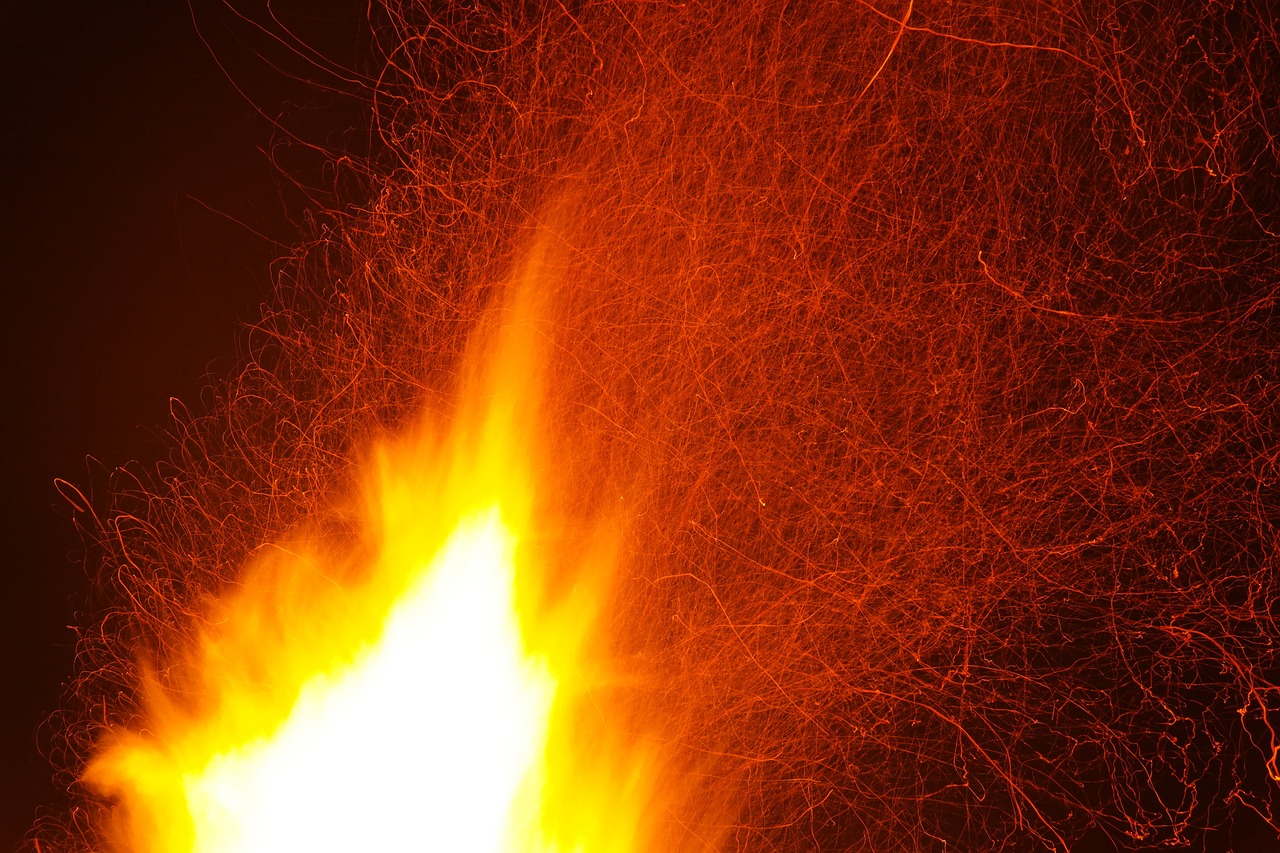
Smart Home Technologies
In today's fast-paced world, are revolutionizing the way we interact with our living spaces. Imagine a home that not only responds to your needs but also helps you save energy and reduce your carbon footprint. Sounds like something out of a sci-fi movie, right? Well, it's not! With the advent of cutting-edge technology, homeowners can now integrate various smart devices that work together to maximize energy efficiency.
One of the most exciting aspects of smart home technology is its ability to monitor and control energy usage in real-time. For instance, smart thermostats can learn your schedule and adjust the temperature accordingly, ensuring that you’re not heating or cooling an empty house. This not only enhances comfort but also leads to significant savings on energy bills.
Furthermore, smart lighting systems allow you to control the lights in your home from your smartphone or even with voice commands. You can set schedules, dim the lights, or turn them off remotely, which is particularly useful if you forget to switch off the lights when you leave the house. Imagine being able to walk into a perfectly lit room without lifting a finger! It's like having your own personal assistant, but instead, it's just a smart bulb.
Additionally, smart plugs and outlets can turn any device into a smart device. By connecting your appliances to these plugs, you can monitor their energy consumption and control them from anywhere. For example, you can set your coffee maker to brew a fresh pot just before you wake up, or you can turn off devices that you left on while you’re away from home. This level of control not only adds convenience to your life but also promotes energy conservation.
Moreover, many smart home systems can be integrated with renewable energy sources like solar panels. This integration allows homeowners to optimize their energy usage by storing excess energy generated during the day for use at night. Imagine generating your own electricity and using it efficiently throughout your home—now that’s a game changer!
To give you a clearer picture of how these technologies can work together, here's a simple overview of some popular smart home devices:
| Device | Functionality | Energy Savings |
|---|---|---|
| Smart Thermostat | Controls home temperature based on your schedule | Up to 30% on heating and cooling costs |
| Smart Lighting | Adjusts brightness and schedules | Up to 80% less energy than traditional bulbs |
| Smart Plugs | Controls devices remotely and monitors usage | Variable savings based on usage |
| Smart Home Hub | Central control for all smart devices | Improves overall efficiency |
In conclusion, embracing smart home technologies is not just about convenience; it’s about making a conscious effort to live more sustainably. By integrating these devices into your home, you can significantly reduce your energy consumption and contribute to a greener planet. So, are you ready to transform your home into a smart, energy-efficient haven?
- What is a smart home? A smart home is a residence that uses smart devices to control and monitor systems such as lighting, heating, and security.
- How do smart home technologies save energy? They allow for better control and monitoring of energy use, which helps reduce wastage and optimize consumption.
- Can I integrate smart home technologies with renewable energy sources? Yes, many smart home devices can be integrated with solar panels and other renewable energy systems to maximize efficiency.

Insulation and Energy Conservation
When it comes to energy conservation, proper insulation is like the unsung hero of your home. Think of insulation as a warm blanket for your house, keeping the heat in during winter and the cool air in during summer. Without adequate insulation, your home can become a leaky bucket, wasting precious energy and driving up your utility bills. So, how do you ensure that your home is snug and energy-efficient?
First off, let's talk about the different types of insulation materials available. From fiberglass to foam board, each type has its own set of benefits and drawbacks. For instance, fiberglass insulation is popular due to its affordability and effectiveness, while spray foam insulation provides a superior air seal, preventing drafts. Choosing the right insulation material can significantly impact your home's energy efficiency, so it’s worth doing your homework.
Another critical factor in insulation is the R-value, which measures the material's resistance to heat flow. The higher the R-value, the better the insulation's effectiveness. Depending on your climate zone, you might need different R-values in various parts of your home. For example, in colder regions, you might require higher R-values in your attic and walls compared to warmer areas. Here’s a quick reference table to help you understand the recommended R-values based on your location:
| Climate Zone | Recommended R-value for Attic | Recommended R-value for Walls |
|---|---|---|
| Zone 1 (Hot) | R-30 | R-13 |
| Zone 2 (Warm) | R-38 | R-15 |
| Zone 3 (Mixed) | R-49 | R-19 |
| Zone 4 (Cold) | R-60 | R-20 |
| Zone 5 (Very Cold) | R-60+ | R-21 |
It's not just about the materials and R-values; the installation process is equally essential. Poorly installed insulation can lead to gaps and voids that diminish its effectiveness. Whether you decide to go the DIY route or hire a professional, ensuring a proper installation will maximize your energy conservation efforts.
Additionally, consider areas that often get overlooked, such as basements and crawl spaces. Insulating these areas can significantly reduce heat loss and improve overall energy efficiency. Many homeowners underestimate the impact of these spaces, but they can be a significant source of energy waste if not properly insulated.
Lastly, don’t forget about the importance of air sealing. Even the best insulation won’t work effectively if air can flow freely in and out of your home. Sealing cracks and gaps around windows, doors, and other openings can help maintain your desired indoor temperature and further enhance energy conservation.
In summary, investing in proper insulation and energy conservation techniques is not just about saving money; it's about creating a comfortable living environment while also contributing to a more sustainable future. With the right materials, installation, and attention to detail, you can transform your home into an energy-efficient haven.
- What is the best type of insulation for my home? The best type of insulation depends on your specific needs, climate, and budget. Common options include fiberglass, spray foam, and cellulose.
- How can I tell if my home is poorly insulated? Signs of poor insulation include drafts, fluctuating temperatures, and high energy bills. A professional energy audit can also provide insights.
- Is it worth investing in insulation? Absolutely! Proper insulation can significantly reduce energy costs and improve comfort levels in your home.
Frequently Asked Questions
- What is green energy?
Green energy refers to renewable energy sources that are environmentally friendly, such as solar, wind, hydroelectric, and geothermal energy. These sources help reduce our reliance on fossil fuels and contribute to a more sustainable future.
- How can I power my home with solar energy?
You can power your home with solar energy by installing solar panels on your roof or property. These panels capture sunlight and convert it into electricity, which can be used to power your home, reduce your energy bills, and even earn you credits through net metering.
- What are the benefits of using solar panels?
Solar panels offer numerous benefits, including lower electricity bills, increased property value, and a reduced carbon footprint. Additionally, they can provide energy independence and protection against rising energy costs.
- What challenges might I face with solar energy?
While solar energy has many advantages, it also presents challenges like high upfront installation costs and dependence on sunlight. However, advancements in technology and financing options, such as solar loans and leases, can help mitigate these issues.
- Can I use wind energy at home?
Yes! Small wind turbines can be installed at residential properties to harness wind energy. These turbines can complement other renewable energy sources and help reduce your overall energy consumption.
- What are smart home technologies?
Smart home technologies are devices that help monitor and control your home's energy usage. Examples include smart thermostats, energy monitors, and smart lighting systems, all of which can significantly enhance your home's energy efficiency.
- How can I improve my home's energy efficiency?
Improving your home's energy efficiency can be achieved through several methods, including upgrading to energy-efficient appliances, enhancing insulation, and utilizing smart home technologies to monitor and reduce energy consumption.
- What role does insulation play in energy conservation?
Proper insulation is crucial for energy conservation as it helps maintain your home's temperature. By improving insulation in your walls, attic, and floors, you can reduce the need for heating and cooling, leading to lower energy bills and a more comfortable living environment.



















